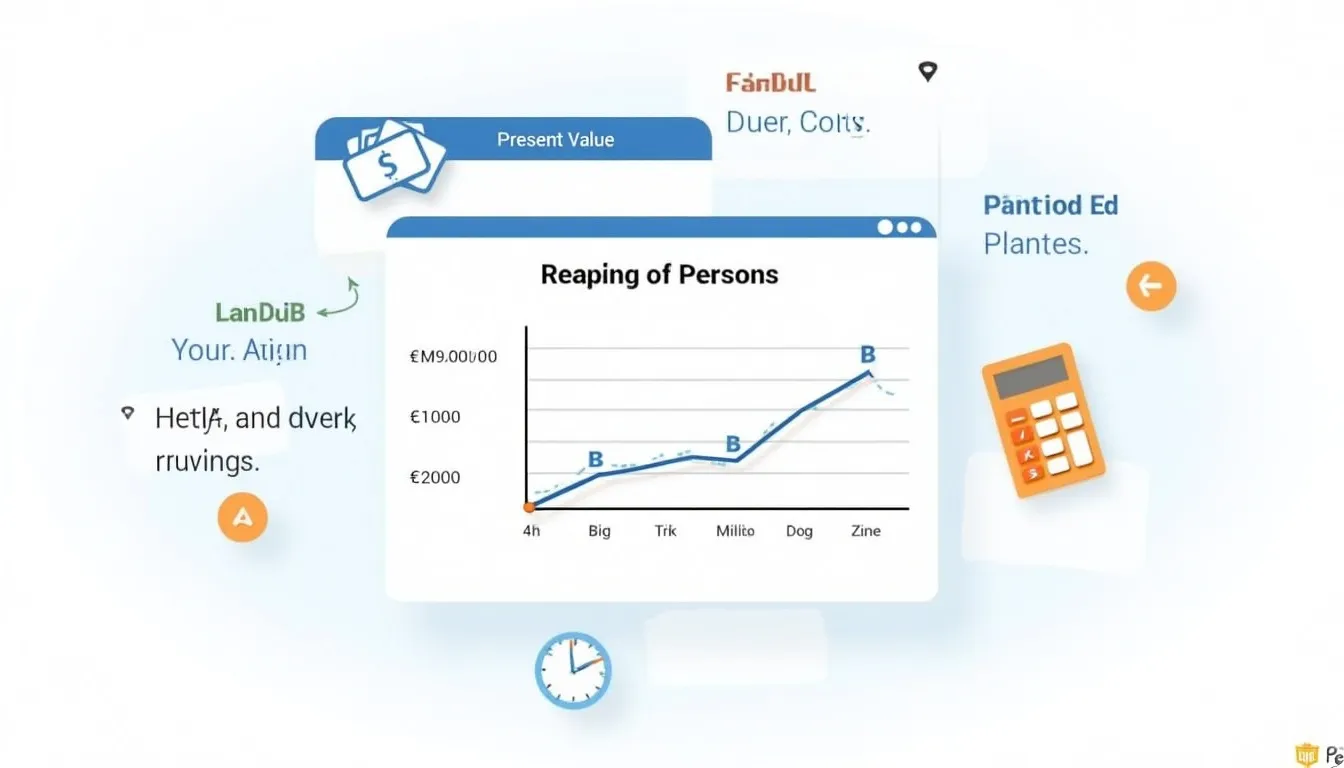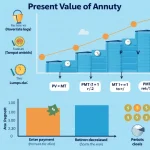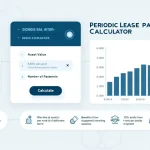Annuity Due Payment Calculator
Is this tool helpful?
How to use the tool
- Present Value (PV): Type the lump-sum that funds the annuity.
Examples: $75,000 or $260,000. - Rate Per Period (r): Enter the interest rate for one payment period, not the annual rate.
Examples: 0.40 % (monthly) or 1.25 % (quarterly). - Number of Periods (n): Input how many payments occur.
Examples: 48 or 28. - Press “Calculate” to see the payment that occurs at the beginning of every period.
Formula used
The JavaScript code applies:
$$\text{Payment}=PV \times rac{r}{1-(1+r)^{-n}} rac{1}{1+r}$$Checked examples
- Example 1: PV = $75,000, r = 0.004, n = 48 ⇒ Payment ≈ $1,716.
- Example 2: PV = $200,000, r = 0.0125, n = 28 ⇒ Payment ≈ $8,406.
Quick-Facts
- Average fixed annuity crediting rate 4.9 % in 2023 (Federal Reserve Statistical Release, 2024).
- Typical surrender period: 5-10 years (FINRA Annuities Guide, 2023).
- IRS penalty on early withdrawal before 59½ is 10 % (IRS Pub 575, 2023).
- U.S. median household retirement savings $87,000 (Survey of Consumer Finances, 2022).
FAQ
What is an annuity due?
An annuity due is a series of equal payments made at the beginning of each period, so every payment earns one extra compounding interval compared with an ordinary annuity (CFA Institute, 2022).
How does the calculator compute the payment?
It multiplies PV by the rate-to-present-value ratio, adjusts for the finite term, then divides by (1 + r) to shift payments to period start. The formula appears above and matches standard finance-textbook derivations (Bodie et al., 2021).
What if the rate per period is zero?
With r = 0, the equation simplifies to Payment = PV / n because no interest accumulates (Ross & Westerfield, 2022).
How do I convert an annual rate to a per-period rate?
Divide the nominal yearly rate by the number of periods per year—e.g., 6 % ÷ 12 = 0.5 % monthly (Investopedia, “Effective Annual Rate”).
Can I use the tool backward to find present value?
Yes—rearrange the formula: $$PV=\text{Payment} \times rac{1-(1+r)^{-n}}{r}(1+r)$$ Then enter your assumed payment, rate, and periods.
What happens when I increase the number of periods?
A longer schedule spreads PV over more payments, so each payment falls—roughly inversely when r is small (Fabozzi, 2020).
Are annuity payments taxable?
Earnings portion of each payment counts as ordinary income, while return of principal is tax-free (IRS Pub 575, 2023).
How accurate is this online calculator?
It uses double-precision floating-point math, identical to financial-calculator chips, yielding cent-level precision for typical retail values (TI Financial Manual, 2021).
Important Disclaimer
The calculations, results, and content provided by our tools are not guaranteed to be accurate, complete, or reliable. Users are responsible for verifying and interpreting the results. Our content and tools may contain errors, biases, or inconsistencies. Do not enter personal data, sensitive information, or personally identifiable information in our web forms or tools. Such data entry violates our terms of service and may result in unauthorized disclosure to third parties. We reserve the right to save inputs and outputs from our tools for the purposes of error debugging, bias identification, and performance improvement. External companies providing AI models used in our tools may also save and process data in accordance with their own policies. By using our tools, you consent to this data collection and processing. We reserve the right to limit the usage of our tools based on current usability factors.







